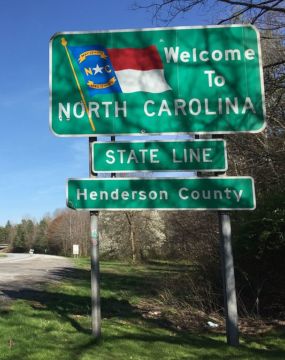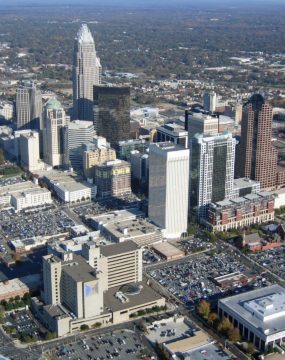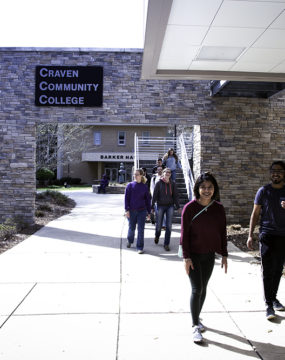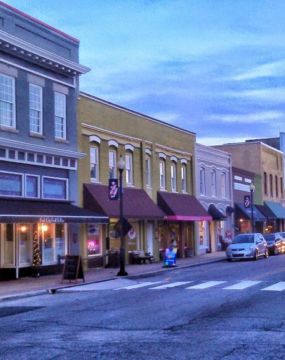Keep up with our latest demographic insights

Migration is the main driver of North Carolina’s population growth. Three of every four new residents added to the state between July 1, 2016, and July 1, 2017, were from net migration, primarily from other states. (Note: individuals are classified as domestic or international migrants based on their country of prior residence, not on individual characteristics such as place of birth or citizenship status.) Between 2016 and 2017, the Census Bureau estimates that North Carolina…

North Carolina’s population grew to an estimated 10.3 million people as of July 1, 2017, according to new estimates from the U.S. Census Bureau. From July 1, 2016 to July 1, 2017, the state’s population increased by nearly 117,000 individuals. This number surpassed last year’s total population increase and marks the largest single year increase in the state’s population since 2010. Among the states, North Carolina had the 5th largest numeric increase since 2016. Only…


Colleges and universities can have a significant impact on local demographic and economic statistics. College towns tend to see inflated poverty rates: more off-campus students (as share of population) corresponds to higher poverty rates. In Boone, North Carolina, for example, off-campus students at Appalachian State University make up 57% of the local population* and the local poverty rate is 62%. Some of these poor individuals may be college students who are choosing not to work…


Series note: This post and the others in this series are the outgrowth of a presentation jointly developed with Dr. Krista M. Perreira and presented by Dr. Perreira to the October meeting of the North Carolina Governor’s Hispanic/Latino Advisory Board. Terminology note: The U.S. Census Bureau introduced the term Hispanic in 1980 and this is a term preferred by some Hispanic/Latino populations. The term Latino became more commonly used in the 1990s and is preferred…


There is a newer version of this blog post available: North Carolina’s Hispanic Community: 2019 Snapshot Series note: This post and the next few in the series are the outgrowth of a presentation jointly developed with Dr. Krista M. Perreira and presented by Dr. Perreira to the October meeting of the North Carolina Governor’s Advisory Council on Hispanic/Latino Affairs. Terminology note: The U.S. Census Bureau introduced the term Hispanic in 1980 and this is a…


July 2015 to July 2016 was the largest year of population growth for the state of North Carolina for any single-year period since the last decennial Census (2010). This was also the case for 124 of North Carolina’s municipalities, including several with previously slim or even declining population growth. These places are labeled and represented by colored markers on the Story Map below. The table accompanying each point compares the numeric and percentage growth year-to-year…


In the next few months, the U.S. Census Bureau is releasing multiple data products that will provide new years of data, as well as some new detail not currently available. Here are the four most valuable updates for better understanding NC and its changing demographics: New county-to-county migration flow tables updated with 2011-15 data. The release of these tables and the update to the Census Flows Mapper web application will be the first time that non-overlapping…


Despite substantial growth in some areas of the state, a large portion of North Carolina has seen little to no population increase. Of North Carolina’s 553 municipalities, 225, or about 41%, experienced population decline from 2010-2016. An additional 192 reported growth that was lower than 6.4%, the state’s growth rate since 2010. In total, three of every four North Carolina municipalities have lost population or grown slower than the state since 2010. The northeast corridor…


North Carolina’s population, much like the nation at large, is growing older and more diverse. The new 2016 detailed population estimates from the U.S. Census Bureau provide data on the age, sex, and racial/ethnic composition of state and county populations. In North Carolina, the 65 and older population grew from 1.2 million in 2010 to 1.6 million in 2016, an increase of 335,000 or 27%. As of 2016, 15.5% of North Carolina’s population was 65…



The U.S. Census Bureau recently made its 2016 population estimates available, and the topline trends for North Carolina has maintained a nearly identical trajectory as 2015. Since the last decennial Census in 2010, North Carolina has seen its urban metropolitan areas grow consistently larger, while small, often rural municipalities have struggled to maintain population. North Carolina’s two largest metropolitan statistical areas – Charlotte-Concord and the Triangle (Raleigh-Durham-Chapel Hill) – have driven much of North Carolina’s…
Your support is critical to our mission of measuring, understanding, and predicting population change and its impact. Donate to Carolina Demography today.